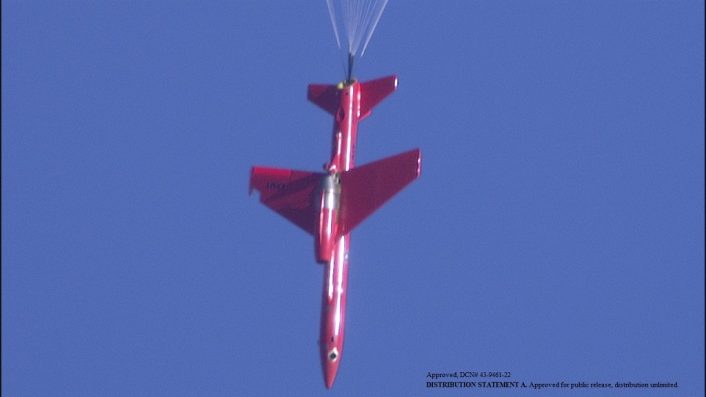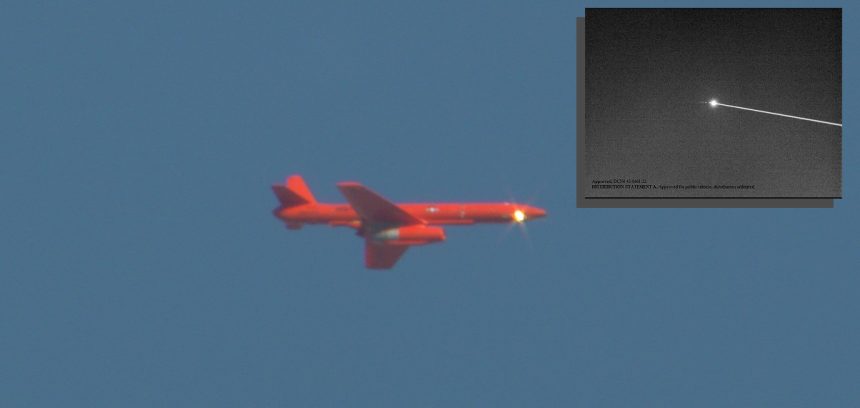The test marked the first time the Navy used an all-electric, high-energy laser weapon to defeat a target representing a subsonic cruise missile in flight.
The Office of Naval Research of the U.S. Navy recently announced a historic demonstration of the Layered Laser Defense (LLD) that was performed in February 2022 at the U.S. Army’s High Energy Laser Systems Test Facility at White Sands Missile Range in New Mexico. The demonstration marked the first time the Navy used an all-electric, high-energy laser weapon to defeat a target representing a subsonic cruise missile in flight.
The high-power laser weapon was designed and built by Lockheed Martin to serve as a multi-domain, multi-platform demonstration system, capable of countering Unmanned Aerial Systems and fast-attack boats as well as using its high-resolution telescope to track nearby air threats, support target identification and conduct Battle Damage Assessment after the engagement. The compact system has been said to be more efficient than previous ones and incorporates artificial intelligence to improve tracking and targeting.
“Innovative laser systems like the LLD have the potential to redefine the future of naval combat operations,” said Chief of Naval Research Rear Adm. Lorin C. Selby. “They present transformational capabilities to the fleet, address diverse threats, and provide precision engagements with a deep magazine to complement existing defensive systems and enhance sustained lethality in high-intensity conflict.”
During the test, the ground-based LLD system demonstrator homed in on the cruise missile-representative target drone flying by, shooting a high-energy laser beam until the drone was disabled and deployed its parachute. The drone used in the test appears to be, according to the photos released, a U.S. Army MQM-107 Streaker, a reusable, turbojet powered, subsonic target towing drone primarily used by the Army and the Air Force for testing and training since the 1980s. In addition to the MQM-107 of this test, the LLD tracked or shot down an array of different targets, including unmanned fixed-wing aerial vehicles, quadcopters and high-speed drones representative of subsonic cruise missiles.
“We’re proud to say that the Layered Laser Defense system defeated a surrogate cruise missile threat in partnership with the Navy, White Sands Missile Range and Army High Energy Laser Systems Test Facility teams. Lockheed Martin drew best-in-class laser weapon subsystems from across the corporation, including key industry partner Rolls-Royce, to support the entire threat engagement timeline from target detection to defeat,” said Rick Cordaro, vice president, Lockheed Martin Advanced Product Solutions. “We leveraged more than 40 years of directed energy experience to create new capabilities that support the 21st century warfighter.”

While there is no plan yet to field the LLD after the conclusion of the demonstration program, the tests support a broader effort by the naval research and development community to mature technologies and finally field to the fleet a family of laser weapons that can address multiple threats. A technology like LLD also allows to use a range of escalating options, such as non-lethal optical “dazzling” and disabling of sensors, before resorting to lethal force.
Other than providing a fast and precise mean to engage a threat, laser weapons also offer simplified logistics that are safer for both the ships and their crews, as they are not dependent on the traditional propellants or gunpowder-based ordnance usually found on ships. In fact, modern high-power lasers run on electricity, making them inherently safer and lowering the cost per engagement, since the only consumable item expended is fuel to run the ship’s power system.
“LLD is an example of what a very advanced laser system can do to defeat significant threats to naval forces,” said David Kiel, a former Navy captain who is a program officer in ONR’s Aviation, Force Projection and Integrated Defense Department, which managed the testing. “And we have ongoing efforts, both at ONR and in other Navy programs, to keep building on these results in the near future.”
Directed energy is currently one of the Department of Defense’s critical technology areas. The Office of Naval Research plays an important role in developing these technologies and has already fielded demonstration systems for operational experimentation. Notably, in 2014 ONR saw the Laser Weapon System tested successfully aboard the USS Ponce in the Persian Gulf and, more recently, the Laser Weapon System Demonstrator fielded aboard the USS Portland in 2021.









